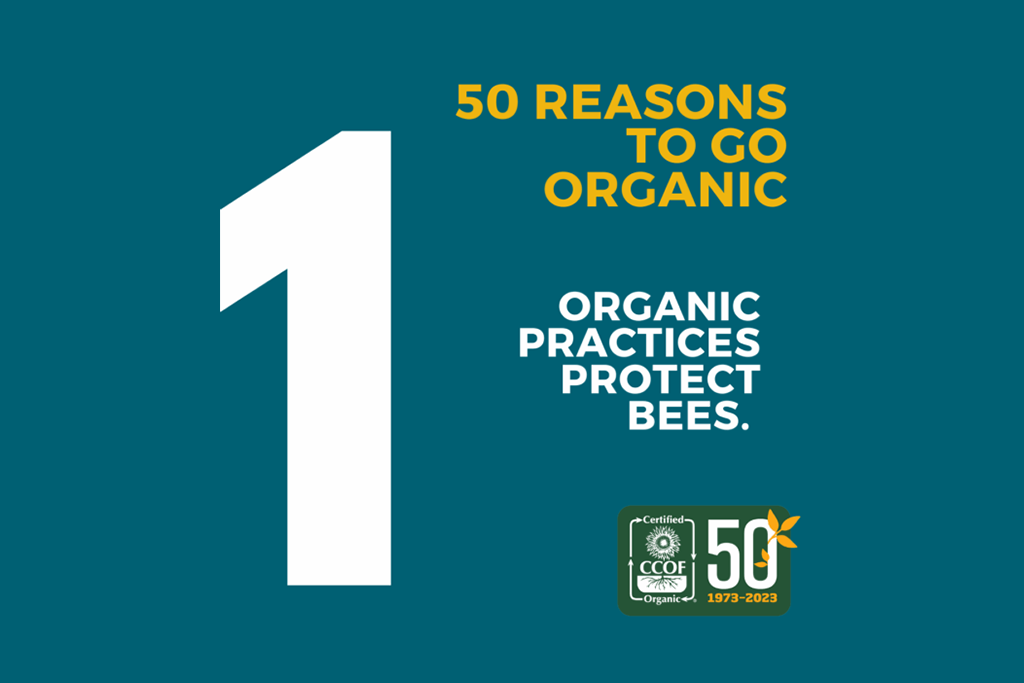The buzzword “regenerative” catches consumers’ attention, so it’s often thrown onto product labels. But how many consumers can define with confidence what exactly “regenerative” means?
It’s a tough question to answer, given there is no federal consensus on what the term means. The word regenerative shows up on product labels for a variety of optimistic reasons that could include adding a single solar panel to a company office. The Food and Land Use Coalition, in their 2023 report, notes that the “lack of definition and misalignment around practices and what constitutes as ‘regenerative’ can create a risk of greenwashing.”
Although the federal government does not provide standards for “regenerative” the way they do for the term “organic,” CCOF does offer a Regenerative Organic Certified® (ROC) program in partnership with the Regenerative Organic Alliance (ROA). ROC requires all operations to be certified organic as a baseline. The ROC certification then builds on the organic regulations with additional requirements under three pillars: Soil Health, Animal Welfare, and Farmer and Worker Fairness. Basically; ROC is certified and enforced by CCOF as organic-plus.
“I’m very proud of the fact that we’re inspecting and certifying for the ROC,” says Tom Willey (T&D Willey Farms), who serves on the Board-appointed CCOF LLC Management Committee. “Back when we were starting the organic movement in the ‘70s, we didn’t foresee anyone getting involved in organic agriculture who wasn’t as philosophically committed to its principles as we were. We didn’t appreciate that, all these years later, there would be lawyers picking apart loopholes to find the absolute minimum they could get away with.”
“When corporations want to turn regenerative into a marketing shtick, and there’s no legal definition of it like there is of organic, you wade into a murky swamp,” Willey continues. “But organic was like that too, back before we had any legal definition, and eventually it got codified.” Over the last 50 years, CCOF has worked to bring the term “organic” to a trustworthy place, and now is striving to do the same for “regenerative.”
The organic agriculture movement grew out of a desire to farm the right way—by treating animals and people with respect, growing food without toxins, and preserving the land. As April Vasquez, CCOF Chief Certification Officer, explains, “Organic farming is rooted in building soil health and maintaining and improving natural resources, both of which are goals of the regenerative movement.”
At the core of each idea, organic and regenerative share many of the same principles. With the USDA organic certification, consumers can rely on a codified set of enforced standards. With CCOF’s ROC certification, consumers can trust that their products are not only up to organic standards, but even go a step beyond.
The tricky part for consumers is interpreting labels that are often cluttered and confusing. “Regenerative” joins unregulated terms like “all natural” and “superfoods,” leaving shoppers guessing. Not everyone has heard of “Regenerative Organic Certified®” or understands how it differs from the word “regenerative” alone.
“Climate change is driving all this regenerative stuff,” says Willey. “Corporations are under immerse pressure, so they’re putting the pressure on their farmer suppliers to do better. But they’re not always willing to pay. We’ve been exploiting farmers as long as farming’s been invented,” he observes wryly. “That’s why we’re in this pickle.”
“With regenerative organic agriculture, we can rehabilitate soil, respect animal welfare, and improve the lives of farmers,” explains the Regenerative Organic Alliance (ROA) on their website. “We can sequester carbon, build healthier communities, and reap more nutritious and abundant yields.” CCOF is proud to work with the ROA to offer ROC certification.
Like any government program, “organic” isn’t perfect, and CCOF remains active in advocacy efforts to align the federal program with the dreams of its founders and a commitment to continuous improvement. The ROC certification is an opportunity to fill in the remaining gaps and elevate “organic” even further for a label consumers can trust.
Attention CCOF Certified Clients:
The State of California is currently in the process of defining regenerative agriculture. So far, state officials have recommended a big-tent definition that includes a broad array of California producers. What is missing from this perspective is how a loose definition of regenerative will impact organic producers and regenerative organic producers. What will it mean for California-approved regenerative products to compete with USDA organic and ROC? Especially if the standards are not comparably rigorous?
A California-endorsed definition of regenerative will have far-reaching implications—from which producers receive government resources to how a product fares in the marketplace. After all, a definition backed by the state holds weight with consumers.
We need the state to hear from you. Your voice matters—Email the California Department of Food and Agriculture at RegenerativeAg@cdfa.ca.gov and share what it means to be an organic producer and why integrity within regenerative agriculture is important.
